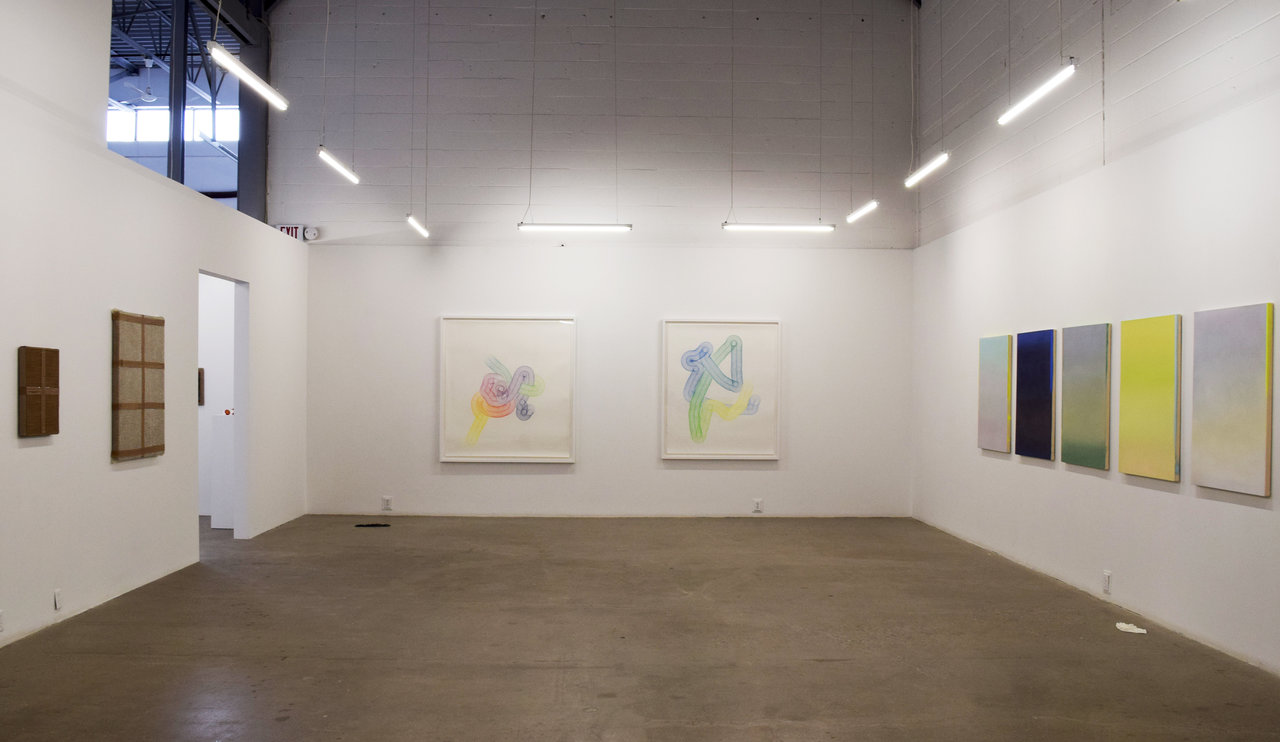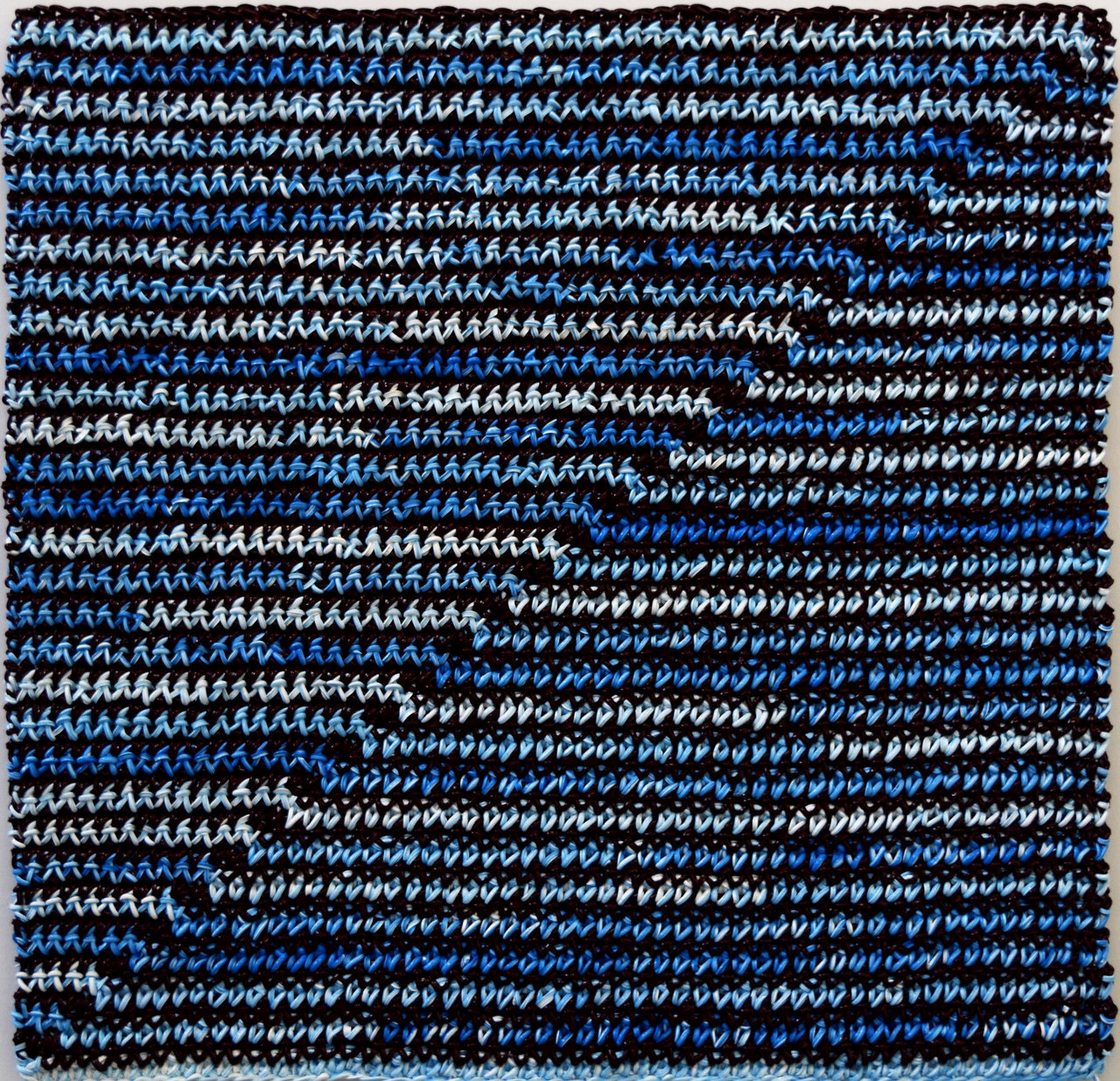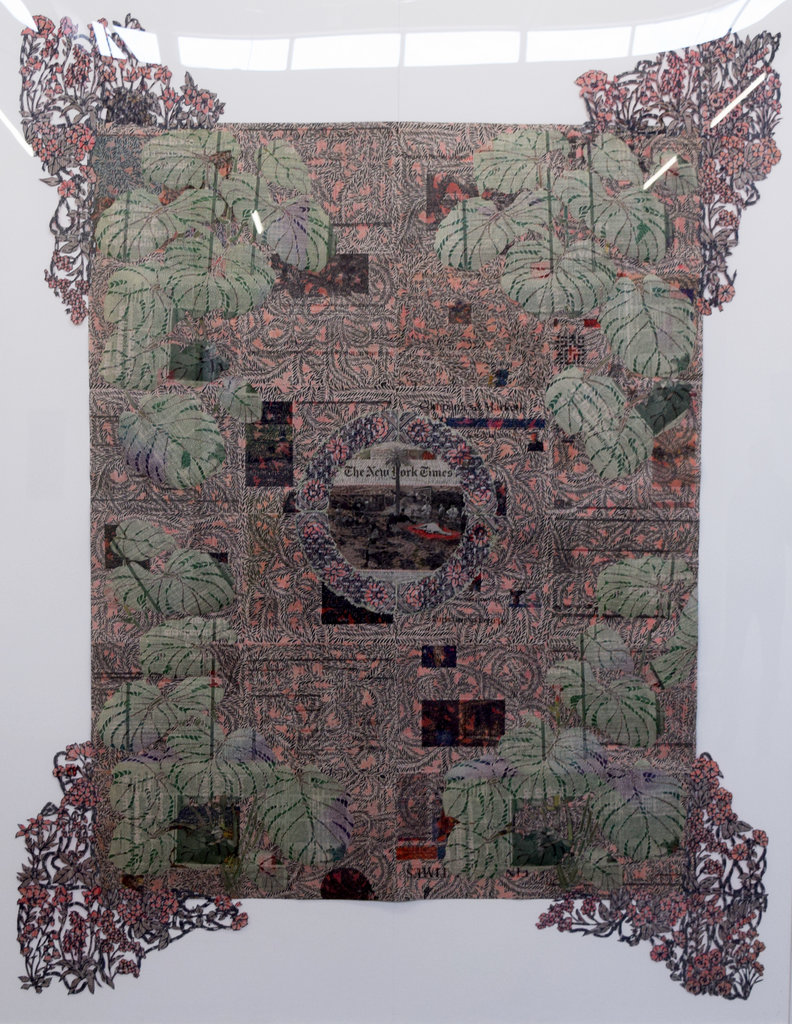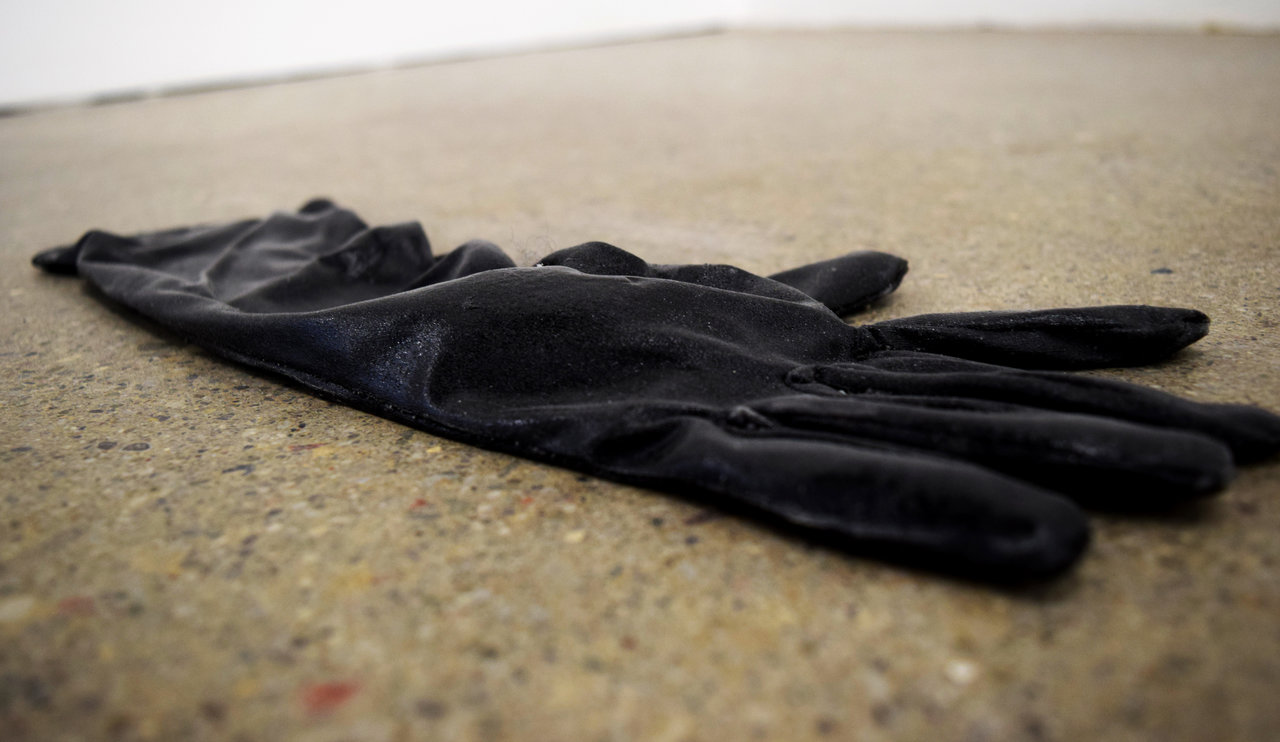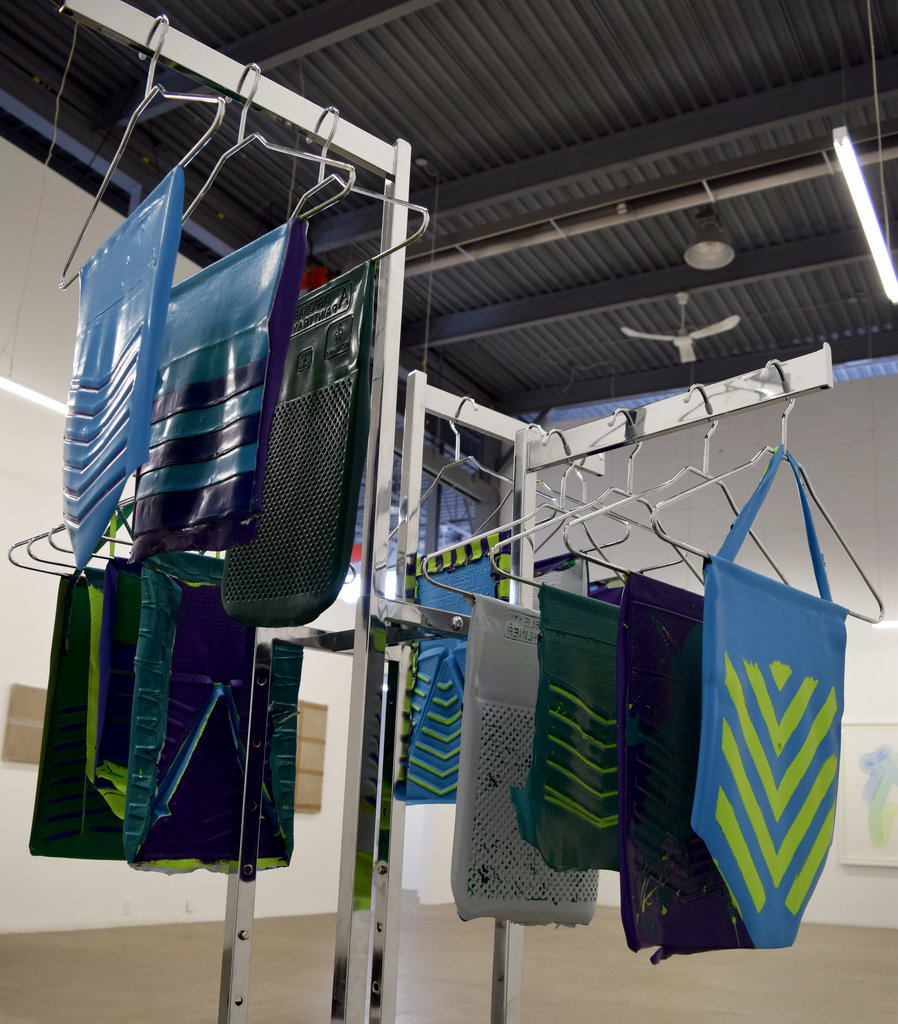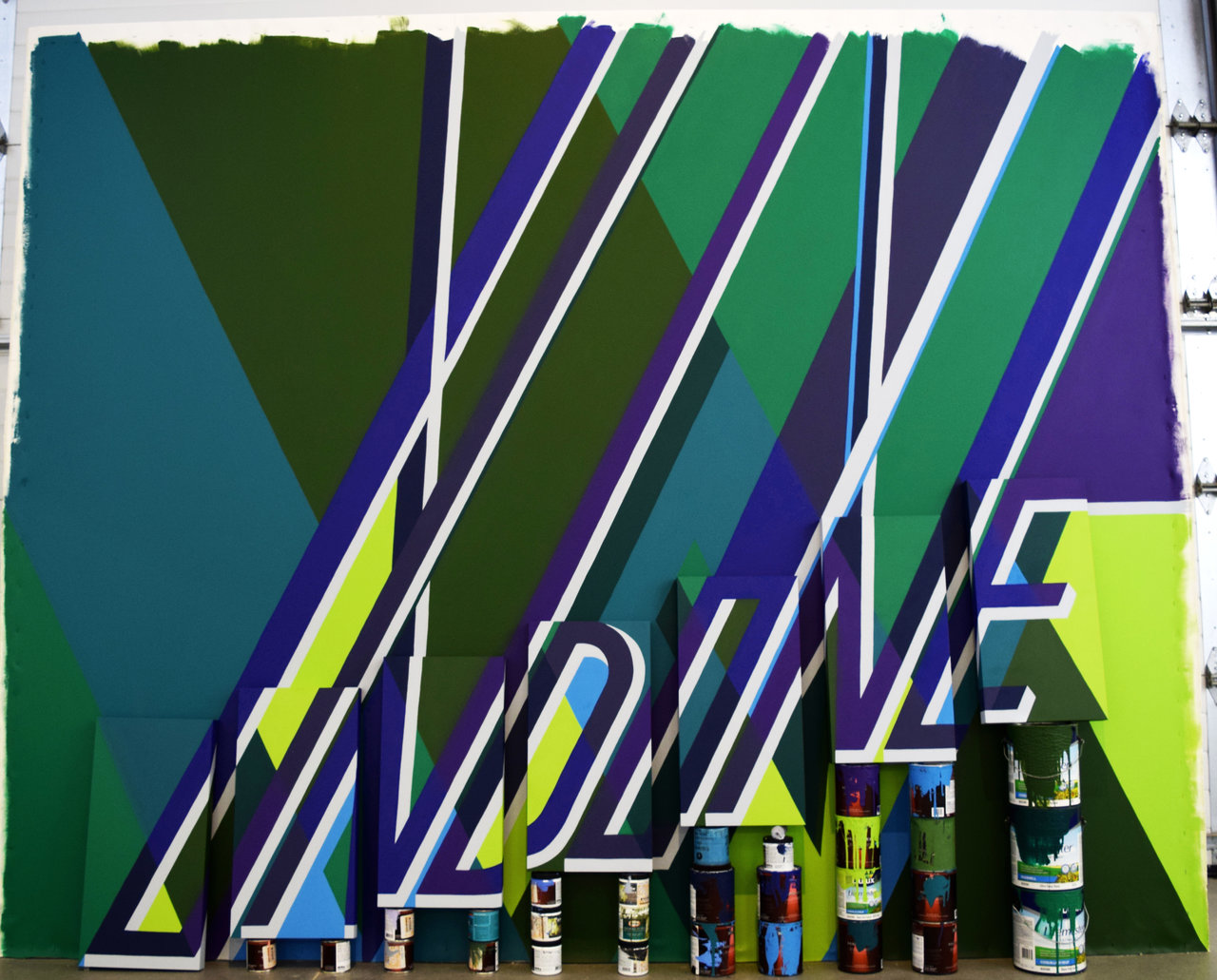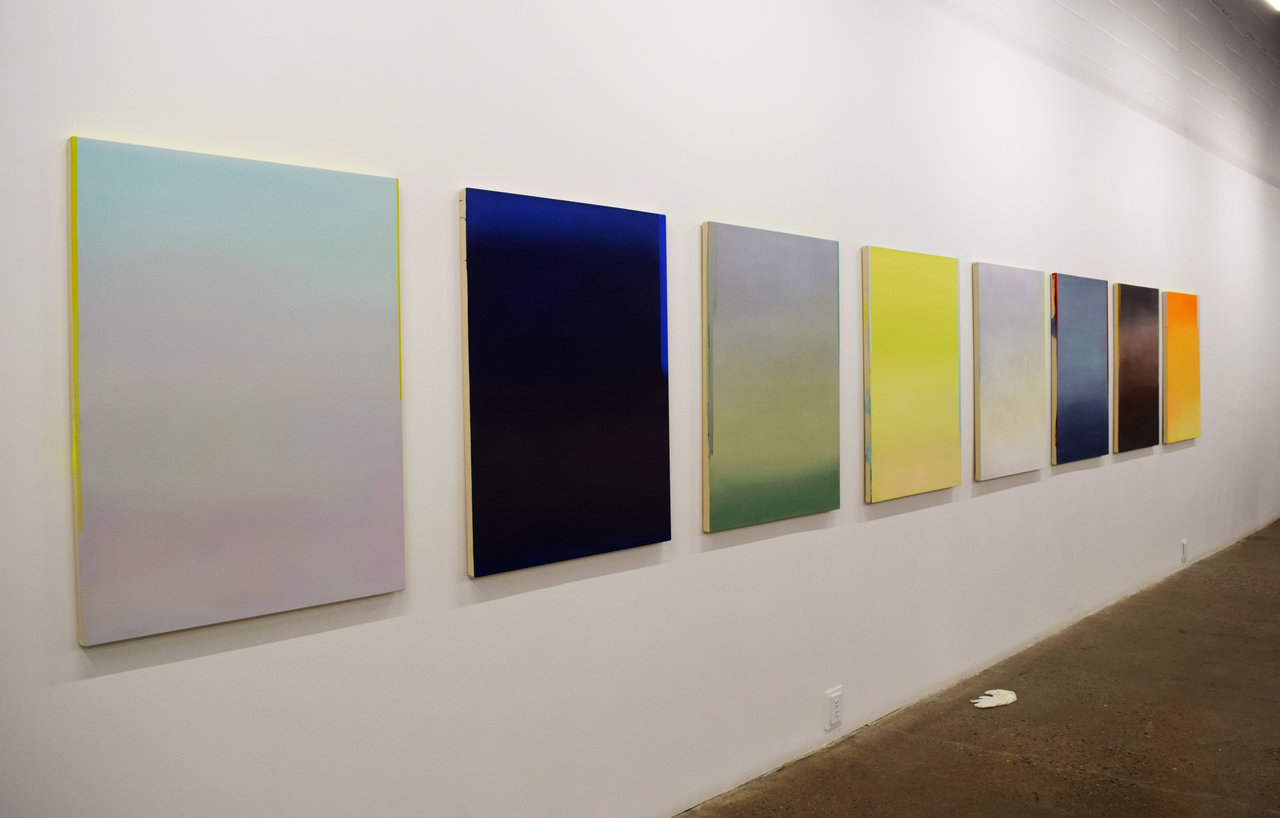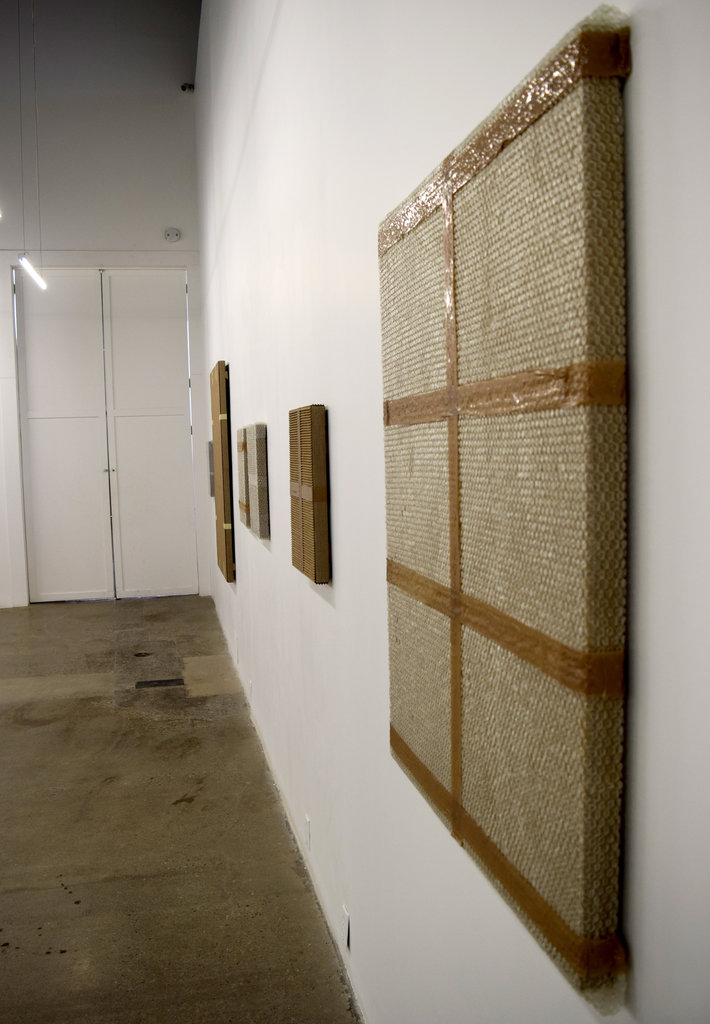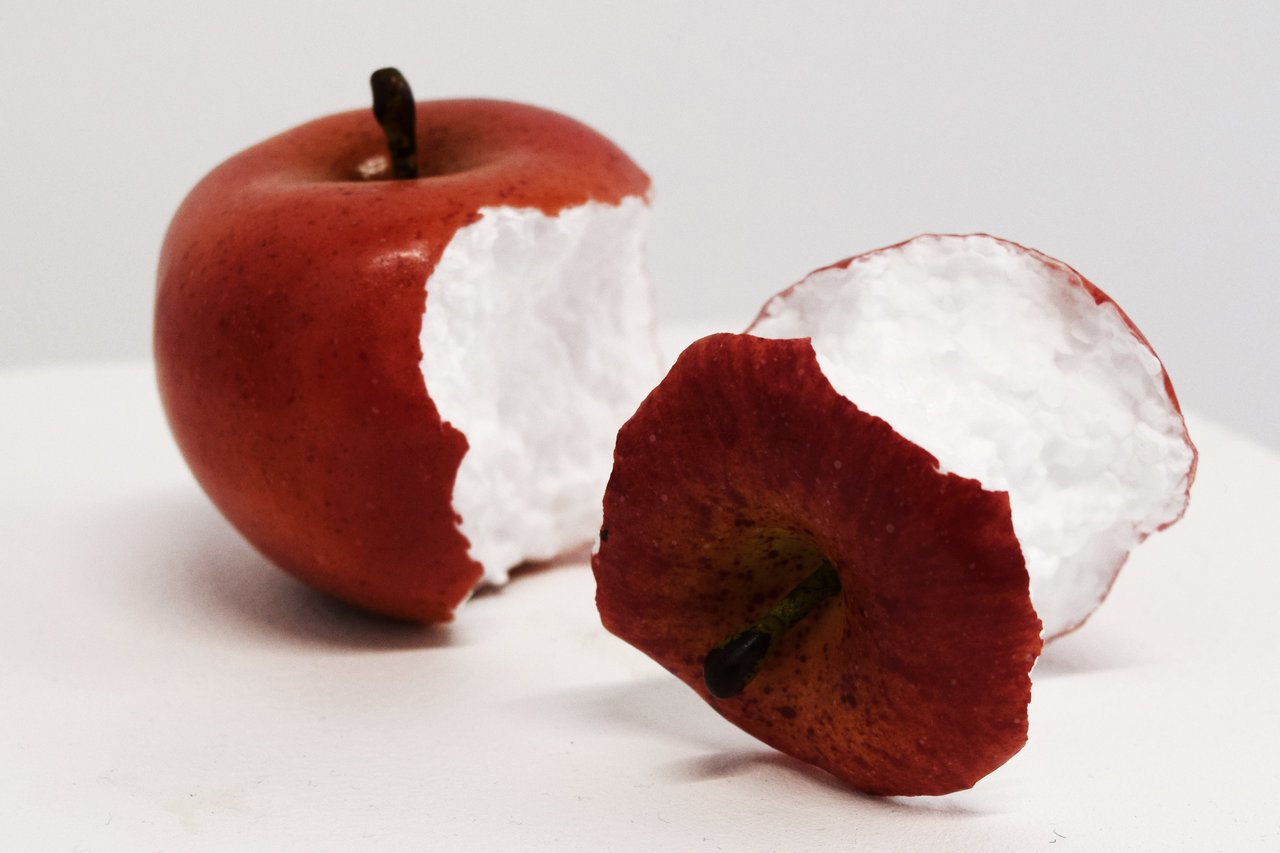Not Too High, Not That Low is a group exhibition that employs a myriad of materials and subject matter to explore the potential effects of manipulating surface. Rather than use textures and mediums as an artistic tool that ultimately contributes to a larger theme, these artists focus on the medium as the subject itself. Surface, explained here as having a dualistic – even antagonistic – purpose, can act “as both a container for illusionistic space and an obstruction that rejects the appearance of depth.” With this strategy, the works also allude to societal concepts of consumerism and socio-economic class differences as well as aesthetics that embrace “mobility, repetition, and the construction of composition.” By implementing synthetic, readymade materials, the exhibition presents an interesting challenge to normative forms of art.
While weaving and painting have been historically established techniques, Angela Teng seamlessly combines the two into a distinctive entity in of its own. Instead of textiles, she utilizes pre-prepared acrylic that emulate woolen textures. It is intended to juxtapose hard-edge painting (an abstractive technique that uses highly contrasting colors) and textile work, which have been commonly associated with masculine and feminine roles.
Angela Teng, Diagonal (blue, white and violet), crocheted acrylic paint on aluminum panel, 20 x 20 in
Similarly, Myriam Dion hybridizes collage and weaving to explore the intrinsically human elements of the often-theatrical mass media. With the growing accusations towards “fake news” media outlets and stories, she critically depicts the credibility of these sources despite the surrounding abstractions that shroud the absurdity or unfeasibility of the news.
Myriam Dion, Tapisserie aux Mille-Fleurs, A moment of Beauty in a Land of Misery, newspaper cut with X-acto knife and collage, 63 ¾ x 85 in
Brittany Shepherd scatters fabricated polyurethane gloves throughout the space to explore the various implications of these objects in different social contexts. Using black and white wax, it can be portrayed as both a high-society eveningwear or a worker’s cleaning implements.
Brittany Shepherd, Phantom Limb (Black Right Hand), polyurethane,15 x 3.5 x 1 in
Eleanor King uses paints trays as moulds to portray bathing suits; taking a tool used for studio work and transforming it to produce a commercial item with flexible social value.
Eleanor King, Bathing Suit installation, latex paint and chrome hanger, sizes vary
Eleanor King, (she’s come) Undone, latex paint, canvas, wood panels, paint cans, 119i x 18.5 x 97 in
Wanda Koop explores the unique aesthetic effects of watercolor and acrylic paints. While appearing soft and faded like a watercolor piece, her technique actually used the thick, solid acrylic medium to simulate this appearance, making sure to leave subtle signatures that allude to its actual quality. Her collection conveys both a misty visage, yet with a lingering radiance, to mimic the presence of light.
Wanda Koop, (left to right) Still Silver, Still-blue, Still Soft-Blue, Still-Yellow, Still-Amber, Still-Crimson, Still-Gold, Still Ice Green, acrylic on canvas, each 30 x 40 in
Tammi Campbell borders on the line between abstraction and realism, readymade and handicraft, illusion and real. Moreover, she further demonstrates the versatility of acrylic as a medium and its capabilities beyond traditional approaches to painting. Although seeming to be simply industrial materials (tape, cardboard, bubble wrap, etc.) assorted onto a canvas, Campbell fashioned these elements out of acrylic paint, emphasizing their unique physical –particularly textual – qualities. Compositionally, they appear as nondescript readymade arranged into abstracted patterns, however the elaborate consideration to persuasively depict these mundane materials adds an additional layer of complexity.
Tammi Campbell, Assorted works beginning with Monochrome with Bubble Wrap and Tan Packing, acrylic on linen, sizes vary
Bea Fremderman strives towards bridging organic and inorganic objects. The fruits appear as realistic when examining their exterior, noting the careful intricacy in the natural texturing and appearance of the peel. Meanwhile, the fruit’s core made of Styrofoam contradicts its outer aesthetic, adopting synthetic characteristics to the natural outlook.
Bea Fremderman, Apples, styrofoam and vinyl, 4 x 8 x 6 in
This exhibition is inherently exploratory, with an array of considerations to spaces, mediums, textures, techniques, and societal themes that can complement or deject each other. The seven artists featured in Not Too High, Not That Low present intriguing and insightful views about how art can manifest outside of restrictive, solidified practices that are otherwise taken as granted.
Text and photo: Simon Termine
*Exhibition information: January 25 – February 24, 2018, Division Gallery, 45 Ernest Avenue, Toronto. Gallery hours: Tue – Sat, 10 – 6 pm.

